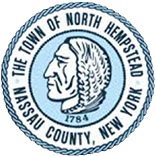About New Cassel, NY
Location
New Cassel is a 1.48 sq. mile unincorporated hamlet of the Town of North Hempstead (“Town”) with a population of 14,199 and a population density of 9,504.8 per sq mile (source: US Census 4/1/2020). The hamlet is centrally located in Nassau County at the corner of the Towns of North Hempstead, Hempstead, and Oyster Bay. Surrounding communities include the Incorporated Villages of Westbury and Old Westbury and the hamlets of Salisbury, Jericho, Hicksville, East Meadow, and Uniondale. The Town of North Hempstead borders the New York City borough of Queens. New Cassel is approximately 26 miles from midtown Manhattan.
Transportation
New Cassel has NICE bus service on Prospect Avenue and Old Country Road. The Westbury Long Island Railroad (LIRR) Station is one (1) mile west, and the Hicksville Station is 1.5 miles east. The LIRR tracks divide the residential area of New Cassel from the industrial park. However, the LIRR just completed grade crossing elimination projects at Urban Avenue and School Street as part of the Third Track project.
The Northern State Parkway is accessed in the northeast corner from Brush Hollow Road. The Wantagh State Parkway ramp is accessed from Old Country Road, and the WSP northern terminus is at Brush Hollow Road. Jericho Turnpike (NYS Route 25) is about 1 mile north of New Cassel. Old Country Road is the southern terminus of the hamlet. The Long Island Expressway is 1.6 miles north of New Cassel.
Community Residents
New Cassel has steadily grown in population from 1990 to the present. The population increase is due to an increase in households and household size. New Cassel has a young population, with 29% under 18 years old. Only 9% of residents are 65+ years (source American Community Survey), a population trend consistent since 1990. New Cassel has a sizeable foreign-born population of 45.1%, with 66.4% of households speaking a language other than English at home (source 2020 US Census). Spanish and Haitian Creole are the most common foreign languages spoken. American Community Survey estimates that residents self-identify as: 36.8% as Black alone, 55.6% as Latino, 5.7% as White only, and 3.4% as two or more races present.
New Cassel residents have a high labor force participation, with 70.6% of the population 16 years+ working and 60.5% of the female population 16 years+ working. The mean travel time to work is 27.6 minutes. The median household income (2016-2020) is $100,432. Approximately 8.8% of the residents are in poverty.
